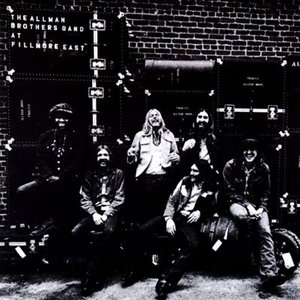
Published on Mar 3, 2002
1971 proved to be a bittersweet year for The Allman Brothers
Band.
The Allman Brothers Band At Fillmore East captures the
highest moments of the year for the group. The band’s first live
disc (and third release overall), this two-record set (yes, I’m
working from an ancient vinyl copy) shows off just how powerful a
live act Gregg and Duane Allman and company could be. It also
serves as a painful reminder of how good a guitarist Duane Allman
was; just a few short months after these concerts were recorded, he
would be killed in a motorcycle accident.
The Allmans had constantly lived their musical life on the edge,
refusing to stick with one particular genre or another. Over the
course of these songs, the Allmans all but declare themselves to be
a blues band with serious jazz overtones – as well as a band who
knew how to jam. At times, they do show that even jams can be
stretched out far beyond their welcome – but more on that in a
little bit.
In a sense, the Allmans had something to prove on this outing.
Their second disc
Idlewild South paled in comparison to their self-titled
debut. The spark had to be re-lit to keep people interested – and
that spark first manifests itself in “Statesboro Blues,” a number
which sometimes feels like it has the power to raise the dead.
Gregg Allman’s whiskey-tinged vocals make it sound like he was the
absolute perfect person to sing the blues, adding a touch of
raucousness as well as playful abandon to the song.
But the true power of the band came in their extended jams,
albeit in possibly a faulty form. According to Stephen Thomas
Erlewine at
All-Music Guide, producer Tom Dowd did edit some of the
tracks on this release, even suggesting that different performances
from different nights were intermixed. While this might create for
good jams (and Erlewine even gives his approval to the final
results), I question if this is indeed an accurate portrait of what
the Allman Brothers Band were doing at this stage in their career.
(No need to let me know how many other albums have been similarly
doctored; there’s enough in the world to upset me as it is.)
Anyhow, the original versions have since been made available on
The Fillmore Concerts, a set we’ll eventually get to
here.
All of this said, one has to admit that the tracks do sound
cohesive – had I not known about Dowd’s edits, I’d have sworn I was
listening to the legitimate article and would have happily grooved
to such tracks as “In Memory Of Elizabeth Reed” and “You Don’t Love
Me,” two ten-minute-plus tracks whose time seems to fly by.
The only time when this strategy fails the Allmans is on their
classic “Whipping Post” – more precisely, in the last few minutes
of the song, when the extended chords and jamming just hits the
creative wall. I don’t mind artists taking liberties with their
music; I
do mind, though, when the end result has me almost screaming
at the record for the band to wake up and wrap the song up.
Some might see
The Allman Brothers Band At Fillmore East as the first sign
the band was leaning towards the infant “Southern rock” genre
thanks to the track “Hot ‘Lanta” – a belief which is sorely
mistaken. One listen to the track and its blues-jazz roots will
prove otherwise. In fact, I’d dare to suggest that the group might
not have taken such a strong turn towards Southern rock and
pseudo-country had Duane Allman lived – keep in mind, “Ramblin’
Man,” the group’s best-received song on the charts, was thanks to
Dickey Betts.)
The Allman Brothers Band proved with this set that they were a
live act who were at the top of their game, and I’m willing to bet
they were an absolute joy to witness first-hand. If only Duane
Allman had lived to fully enjoy the band’s glory days. Even when
the songs occasionally wear out their welcome – which happens only
once – this album proves itself to be one of the best live discs
out there, even 31 years after it was released.